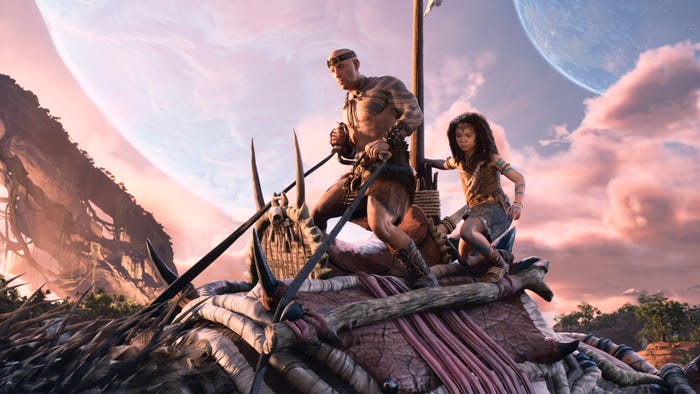Analysis: Wandering Willows And Game Narrative
Writer and designer Emily Short takes a look at storytelling and narrative PlayFirst's non-combat casual RPG Wandering Willows, to see how its game mechanics support its survival-in-the-wild fantasy

[Writer and designer Emily Short takes a look at storytelling and narrative PlayFirst's non-combat casual RPG Wandering Willows, to see how its game mechanics support its survival-in-the-wild fantasy.] My childhood fantasies always began with being orphaned. Nothing against my parents, you understand -- the details of their untimely demise were always airbrushed out of the story as too upsetting to contemplate. But no really good adventures could happen to me while they were around. I imagined that once free of parental protection I would spend my time foraging, picking nuts and berries, building a primitive shelter, digging firepits and catching fish. It was a scenario that drew heavily from Island of the Blue Dolphins, Little House in the Big Woods, and Julie of the Wolves, but minus the gritty realism. My imaginary wooded island had plenty of every food; its weather was temperate; its stones were automatically the right shape for building walls without mortar. This universe seems to have escaped my imagination and is now the setting for Wandering Willows, a casual PC RPG from Playfirst. The protagonist lands in a damaged balloon on a mysterious island. It is a land where every kind of metal can be found ready-pressed into ingots just beneath the surface of the soil; where blackberries and raspberries grow at the tops of trees; where animals carry worked precious stones, but are happy to share. Cotton, wheat, sugar cane, and vanilla can be planted and grown in a matter of minutes. The abundance becomes more and more surreal as the protagonist discovers a need for sulfur, petroleum, hot lava, dinosaur teeth... all of which may be dug out of the yielding earth and transported in her capacious backpack. This island is, of course, full of odd travelers from other times and places. These welcome the protagonist, but invite her to perform an assortment of quests (some kind of local hazing ritual, perhaps). Unlike Westward and its sequels, Wandering Willows involves no fighting and no action sequences; the most morally dubious thing the protagonist ever has to do is help the other characters deceive one another on occasion, and an obvious antecedent and inspiration is Nintendo's popular Animal Crossing series, though it does diverge from that model marginally. For the most part, life is a giddy round of sewing (the other characters do like their costumes), cooking (a huge range of recipes is available), planting crops, exploring the environs and collecting resources. There isn't even any hunting or fishing: everyone in Wandering Willows appears to be vegetarian, and the animals are pets and companions rather than foodstuffs. These pets are the chief mechanism of the game. The protagonist does relatively little work. Most of the hard labor of climbing trees for fruit or digging up the ground is done by pets. The protagonist may be accompanied only by one pet at a time, but can build up a stable of different pet species and rotate among them. Pets need to be fed, and they level up with enough experience. Different species are good at different things. (I found myself fleetingly wondering about the slave-labor hierarchy of this society, since the long-term inhabitants mostly rely on the newcomer to provide them with food and clothing, while the newcomer in turn manipulates the cunning but speechless animals into doing all the really hard work. But I am fairly certain the designers did not intend me to think about any such thing.) What about story? There is a loose framing arc about assembling enough goods to repair your balloon and get off the island, but it isn't the kind of story one is invited to take seriously. The thing is a pastiche of every sort of childhood fantasy element: aliens, pirates, sea monsters, rocket ships, time machines, ancient ruined temples.  As for the gameplay, if you approach it with a goal-oriented, game-winning agenda in mind, you'll find it is largely busywork. You collect quests, you pick fruits and dig up commodities, you fulfill your quests. If you want to, you can go off-script and bake or sew something you weren't explicitly asked to bake or sew, but there is no need to do so: you can earn friendship points by giving gifts to the other characters, but you're likely to end up with their friendship anyway, simply by going through the assigned tasks. Thoroughness is the key to victory. There is nothing to figure out, and little to optimize. Even the small amount of strategy involved in selecting one species of pet over another is rendered more or less unnecessary because the pets are so trainable: you can stick with the first one you find and win handily with him. That this is nonetheless somewhat entertaining is largely down to the game's excellent production values. The island is beautifully rendered; the characters have a certain charm; the animals wriggle and bounce when they are happy, and droop pathetically when they run out of food. (Given all the elements -- the easy gameplay, the playful jumble of children's storybook tropes, the indulgence in a kiddie fantasy of life on an isolated island -- I started to wonder whether Wandering Willows was meant for younger players. But it doesn't present itself that way, and there are some bits -- the goofy cross-dressing character, the oblique references to impotence and constipation, the man who wants you to make fuzzy animal suits for a party -- that seem to assume a more mature view of the universe. Ultimately, I figure it's fine for kids, but not meant to be for them exclusively -- the same way that Muppet movies have adult-friendly jokes that sail over the heads of the younger listeners.) But I have the strong sense that I played the game wrong. The press release for Wandering Willows contains one clue to this, and the narrative arc another. First the quote: “Wandering Willows is a unique title in PlayFirst’s portfolio as it offers a much more open ended experience and heightened interaction”, said Dan Chao, lead game designer. “Player progression and customization are the key elements that were crucial to our overall design process enabling a unique and more engaging experience for every player." This customization is the ability to dress up the player and all the other characters in wacky suits of clothes, and to feed them from a menu so extensive and indiscriminate as to put the Cheesecake Factory's to the blush. If casual players enjoy dressing up Flo in costumes and refurbishing her diner, they may also enjoy dressing up the protagonist of Wandering Willows. I can't really speak to this point: I rarely buy cosmetic upgrades unless I have to. But here's the thing: the story is about the protagonist working to get away -- and becoming so fond of the island and its inhabitants that she starts to wonder whether she really wants to escape. That I didn't play it that way is partly a matter of personal taste and disposition. My hard-headed gamer's mindset made me determined to get through and finish as efficiently as possible. Perhaps if I had played more casually -- spending more time making recipes and costhttp://www.gamasutra.com/admin/newswire_admin.php?story=23984umes just because they looked fun, customizing my character, buttering up my friends -- I would have found the gameplay lining up better with the story. Perhaps I would have settled in to enjoy the ludicrous abundance of this imaginary world while baking blackberry crepes for everyone I knew. I'm a little too impatient to find this pace of gameplay satisfying now, but I bet six-year-old me would have loved it. [Emily Short is an interactive fiction author and part of the team behind Inform 7, a language for IF creation. She also maintains a blog on interactive fiction and related topics. She can be reached at emshort AT mindspring DOT com.]
As for the gameplay, if you approach it with a goal-oriented, game-winning agenda in mind, you'll find it is largely busywork. You collect quests, you pick fruits and dig up commodities, you fulfill your quests. If you want to, you can go off-script and bake or sew something you weren't explicitly asked to bake or sew, but there is no need to do so: you can earn friendship points by giving gifts to the other characters, but you're likely to end up with their friendship anyway, simply by going through the assigned tasks. Thoroughness is the key to victory. There is nothing to figure out, and little to optimize. Even the small amount of strategy involved in selecting one species of pet over another is rendered more or less unnecessary because the pets are so trainable: you can stick with the first one you find and win handily with him. That this is nonetheless somewhat entertaining is largely down to the game's excellent production values. The island is beautifully rendered; the characters have a certain charm; the animals wriggle and bounce when they are happy, and droop pathetically when they run out of food. (Given all the elements -- the easy gameplay, the playful jumble of children's storybook tropes, the indulgence in a kiddie fantasy of life on an isolated island -- I started to wonder whether Wandering Willows was meant for younger players. But it doesn't present itself that way, and there are some bits -- the goofy cross-dressing character, the oblique references to impotence and constipation, the man who wants you to make fuzzy animal suits for a party -- that seem to assume a more mature view of the universe. Ultimately, I figure it's fine for kids, but not meant to be for them exclusively -- the same way that Muppet movies have adult-friendly jokes that sail over the heads of the younger listeners.) But I have the strong sense that I played the game wrong. The press release for Wandering Willows contains one clue to this, and the narrative arc another. First the quote: “Wandering Willows is a unique title in PlayFirst’s portfolio as it offers a much more open ended experience and heightened interaction”, said Dan Chao, lead game designer. “Player progression and customization are the key elements that were crucial to our overall design process enabling a unique and more engaging experience for every player." This customization is the ability to dress up the player and all the other characters in wacky suits of clothes, and to feed them from a menu so extensive and indiscriminate as to put the Cheesecake Factory's to the blush. If casual players enjoy dressing up Flo in costumes and refurbishing her diner, they may also enjoy dressing up the protagonist of Wandering Willows. I can't really speak to this point: I rarely buy cosmetic upgrades unless I have to. But here's the thing: the story is about the protagonist working to get away -- and becoming so fond of the island and its inhabitants that she starts to wonder whether she really wants to escape. That I didn't play it that way is partly a matter of personal taste and disposition. My hard-headed gamer's mindset made me determined to get through and finish as efficiently as possible. Perhaps if I had played more casually -- spending more time making recipes and costhttp://www.gamasutra.com/admin/newswire_admin.php?story=23984umes just because they looked fun, customizing my character, buttering up my friends -- I would have found the gameplay lining up better with the story. Perhaps I would have settled in to enjoy the ludicrous abundance of this imaginary world while baking blackberry crepes for everyone I knew. I'm a little too impatient to find this pace of gameplay satisfying now, but I bet six-year-old me would have loved it. [Emily Short is an interactive fiction author and part of the team behind Inform 7, a language for IF creation. She also maintains a blog on interactive fiction and related topics. She can be reached at emshort AT mindspring DOT com.]
About the Author(s)
You May Also Like













